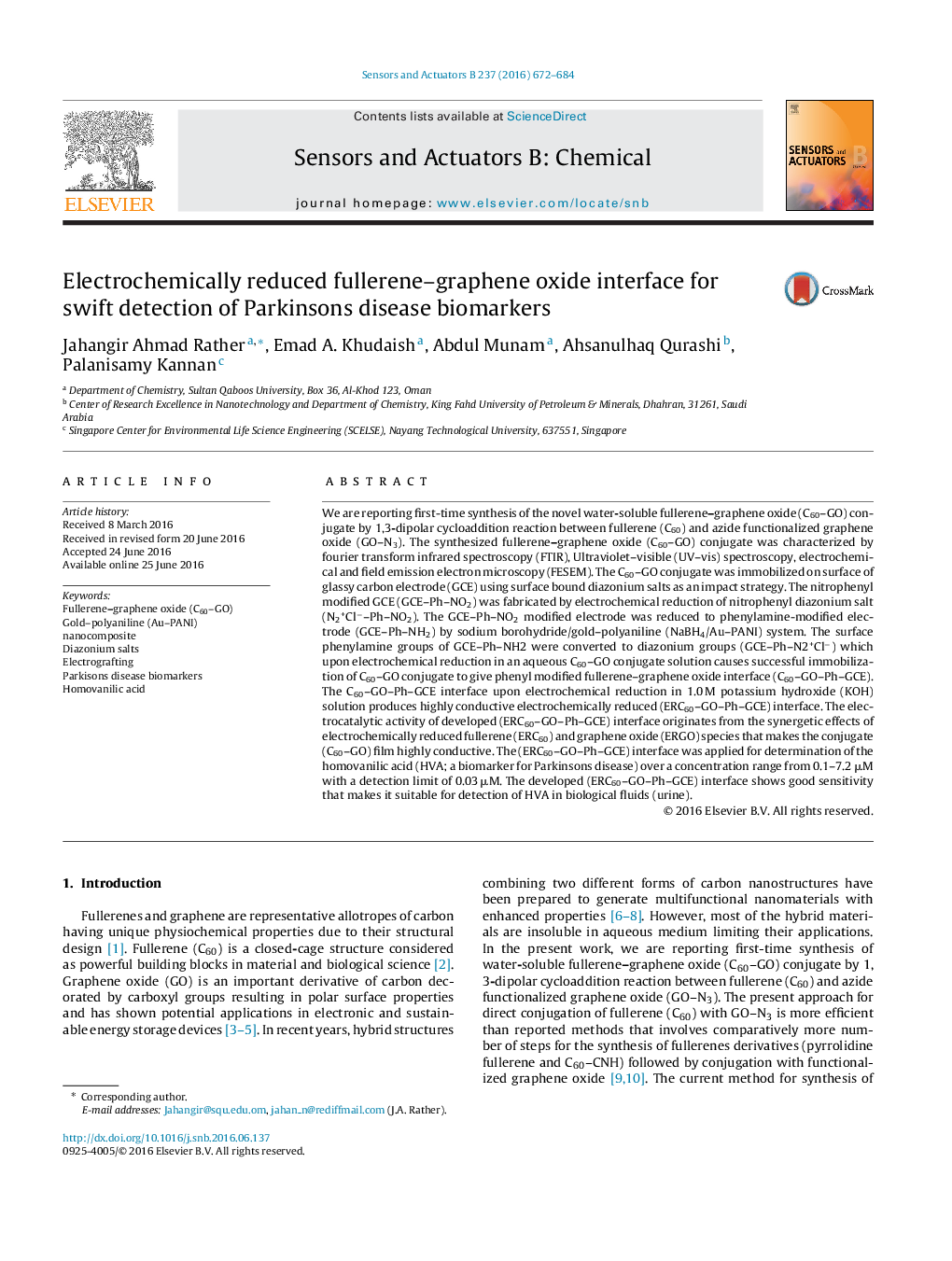| Article ID | Journal | Published Year | Pages | File Type |
|---|---|---|---|---|
| 742302 | Sensors and Actuators B: Chemical | 2016 | 13 Pages |
•GO–C60 conjugate synthesized via 1,3-dipolar cycloaddition reaction.•GO–C60 immobilized at GCE using surface bound diazonium salts.•Fabricated interface shows high electrocatalytic activity for HVA detection.•Present protocol is convenient approach for HVA analysis in human urine.
We are reporting first-time synthesis of the novel water-soluble fullerene–graphene oxide (C60–GO) conjugate by 1,3-dipolar cycloaddition reaction between fullerene (C60) and azide functionalized graphene oxide (GO–N3). The synthesized fullerene–graphene oxide (C60–GO) conjugate was characterized by fourier transform infrared spectroscopy (FTIR), Ultraviolet–visible (UV–vis) spectroscopy, electrochemical and field emission electron microscopy (FESEM). The C60–GO conjugate was immobilized on surface of glassy carbon electrode (GCE) using surface bound diazonium salts as an impact strategy. The nitrophenyl modified GCE (GCE–Ph–NO2) was fabricated by electrochemical reduction of nitrophenyl diazonium salt (N2+Cl−–Ph–NO2). The GCE–Ph–NO2 modified electrode was reduced to phenylamine-modified electrode (GCE–Ph–NH2) by sodium borohydride/gold–polyaniline (NaBH4/Au–PANI) system. The surface phenylamine groups of GCE–Ph–NH2 were converted to diazonium groups (GCE–Ph–N2+Cl−) which upon electrochemical reduction in an aqueous C60–GO conjugate solution causes successful immobilization of C60–GO conjugate to give phenyl modified fullerene–graphene oxide interface (C60–GO–Ph–GCE). The C60–GO–Ph–GCE interface upon electrochemical reduction in 1.0 M potassium hydroxide (KOH) solution produces highly conductive electrochemically reduced (ERC60–GO–Ph–GCE) interface. The electrocatalytic activity of developed (ERC60–GO–Ph–GCE) interface originates from the synergetic effects of electrochemically reduced fullerene (ERC60) and graphene oxide (ERGO) species that makes the conjugate (C60–GO) film highly conductive. The (ERC60–GO–Ph–GCE) interface was applied for determination of the homovanilic acid (HVA; a biomarker for Parkinsons disease) over a concentration range from 0.1–7.2 μM with a detection limit of 0.03 μM. The developed (ERC60–GO–Ph–GCE) interface shows good sensitivity that makes it suitable for detection of HVA in biological fluids (urine).
Graphical abstractFigure optionsDownload full-size imageDownload as PowerPoint slide
